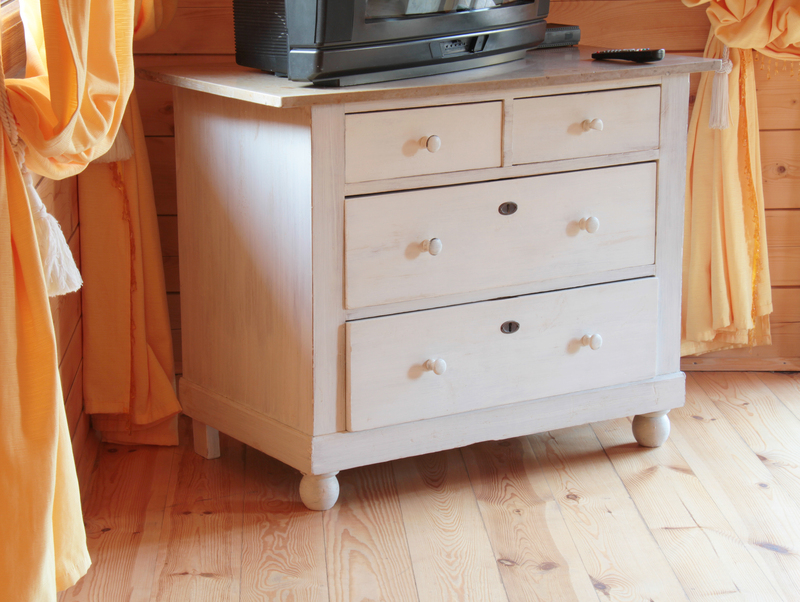Toxic Plastics to Eliminate from Your Life: A Comprehensive Guide for Safer Living
Plastic is everywhere, but not every type of plastic is safe. From water bottles to food packaging, we encounter various types of plastics every day--some of which can have severe health implications. The good news? You can take control. In this comprehensive article, we'll explore the toxic plastics to eliminate from your life, why they're harmful, where they hide, and provide actionable tips for healthier, eco-friendlier alternatives.
Understanding Plastics: What Makes Them Potentially Toxic?
Plastics are synthetic materials made from polymers, which are long chains of molecules derived mainly from petroleum. The trouble is, not all plastics are created equal--some carry compounds that can leach into food, drinks, or even the air, impacting your health over time.
The most concerning toxic chemicals found in plastics include:
- BPA (Bisphenol-A): Linked to hormone disruption, reproductive issues, and increased risk of certain cancers.
- Phthalates: Chemicals used to make plastics flexible, associated with developmental and fertility problems.
- Styrene: A probable human carcinogen found in products like Styrofoam.
- PVC (Polyvinyl Chloride) additives: Can release dioxins, another group of highly toxic compounds.
How Do Toxic Plastics Harm Your Health?
Prolonged exposure to certain dangerous plastics can interfere with hormones, increase cancer risks, impair brain development, and even trigger allergies or asthma. Children and pregnant women are especially vulnerable.

Identifying Toxic Plastics: The Resin Identification Codes
Ever noticed the triangular symbols with numbers at the bottom of plastic containers? These are resin identification codes, and they're crucial for understanding which plastics to keep--and which to ditch. Let's break down the main ones:
- #1 PET or PETE (Polyethylene Terephthalate): Commonly used in single-use water bottles and food packaging. Can leach antimony and phthalates, especially when exposed to heat or reused.
- #2 HDPE (High-Density Polyethylene): Generally considered safe, used for milk jugs and detergent bottles.
- #3 PVC (Polyvinyl Chloride): Known as one of the most toxic plastics. Contains phthalates and chlorine-based chemicals that leach out.
- #4 LDPE (Low-Density Polyethylene): Used for plastic bags, some food wraps. Less toxic, but still not ideal for heating food.
- #5 PP (Polypropylene): Common in yogurt containers and bottle caps. Safer but still not perfect for high temperatures.
- #6 PS (Polystyrene): Also known as Styrofoam, easily leaches styrene when in contact with heat or fatty foods.
- #7 Other (often Polycarbonate): Can contain BPA and other unknown chemicals. Used in hard plastics, baby bottles, and sports equipment.
Eliminate These Toxic Plastics from Your Life
If you're serious about reducing your exposure to toxic plastics, your focus should be on identifying and eliminating the most dangerous types: PVC, Polystyrene, BPA-containing plastics, and any product with ambiguous labeling.
#3 PVC (Polyvinyl Chloride): The Poison Plastic
PVC is dubbed "the poison plastic" because of the toxic chemicals it contains and releases, including chlorine-based compounds and phthalates. Commonly found in:
- Plastic wraps (unless labeled "phthalate-free")
- Shower curtains
- Children's toys
- Clear food packaging
- Plumbing pipes
What to do: Swap out PVC items for non-plastic versions where possible. For food storage, use glass or steel containers. Replace PVC shower curtains with fabric or PEVA alternatives.
#6 Polystyrene (Styrofoam): Lightweight, Heavy Risk
Polystyrene is popular for disposable cups, food trays, and packing peanuts, but it's a probable human carcinogen. When exposed to heat or acidic foods, styrene easily leaches out.
- Takeout food containers
- Disposable coffee cups
- Egg cartons
- Foam packing materials
Alternatives: Use ceramic or glass dishes, and seek out compostable or paper-based containers when ordering takeout.
#7 "Other" Plastics: The Catch-All Category
#7 plastics are a mixed group, but many contain BPA or BPS (bisphenol-S), which are both known endocrine disruptors. Some examples include:
- Reusable water bottles (if old or not specifically marked 'BPA-free')
- Food storage containers
- Baby bottles (older models)
- Sports equipment
- Some Tupperware products
Switch to: Stainless steel, borosilicate glass, or silicone for bottles and storage (make sure silicone is food-grade!).
The Hidden Dangers: Where Toxic Plastics Lurk in Everyday Life
Even if you don't use a lot of single-use plastic, toxic plastics can sneak into many aspects of your daily routine:
- Food packaging: Many "microwave safe" containers or ready-meal trays are laden with chemical-soaked plastics.
- Household goods: Vinyl (PVC) flooring, synthetic leather, electrical cords, and cheap toys.
- Personal care products: Some packaging for shampoos, lotions, and cosmetics.
- Furniture: Foam cushions and mattresses may contain flame retardants linked to plastic production.
Pro tip: Always check labels for BPA, phthalate, or PVC content. Choose products proudly stating "BPA-free" or "phthalate-free."
Safer Alternatives: What Plastics Are Less Harmful?
Not all plastics pose the same risks. So, when you do need to use plastic, stick to these (with caution):
- #2 HDPE: Used for milk jugs, detergent, and juice bottles. Has a low risk of leaching.
- #4 LDPE: Found in bread bags and some squeezable bottles. Safer for cold, non-fatty foods, but avoid microwaving.
- #5 PP (Polypropylene): Used for yogurt containers, medicine bottles, and straws. Relatively stable and heat-resistant.
Remember: Even these should not be heated unnecessarily or reused for hot foods.
Actionable Steps: How to Reduce Toxic Plastic Exposure
- Swap Single-Use for Reusables: Choose glass, stainless steel, or bamboo whenever possible--for water bottles, straws, food storage, and shopping bags.
- Avoid Heating Food in Plastic: Microwaving or dishwashing plastics speeds up chemical leaching. Always reheat foods using glass or ceramic.
- Be Label-Savvy: Learn to recognize resin codes and avoid #3, #6, and #7 plastics.
- Switch Out Old Plasticware: Over time, plastics break down and increase their leaching rates. Replace old containers with safer alternatives.
- Prioritize Kids' Health: Avoid plastic baby bottles, teethers, and toys containing BPA, phthalates, or PVC. Opt for silicone, wood, or glass instead.
- Choose Fresh Over Packaged: Shop the produce aisle and avoid pre-packaged convenience foods stored in plastic wraps or trays.
- Use Natural Cleaning Tools: Replace plastic sponges and brushes with those made from natural fibers and wood.
- Advocate for Policy Change: Support brands and legislation that aim to reduce plastic waste and increase transparency in packaging.
Reading Between the Lines: Decoding Plastic Labels
Many products now boast "BPA-free" or "phthalate-free" labels, but beware: Manufacturers often replace banned chemicals with alternatives that are equally untested or dangerous. Stay informed, and *research* brands or certifications (like OEKO-TEX, GOTS for textiles, or FDA-approved for food containers).
The Environmental Cost of Toxic Plastics
The risks of harmful plastics aren't just personal--they're also planetary. Toxic plastics persist in the environment, break down into microplastics, and pollute air, soil, and water. Wildlife ingests these particles, leading to death, disease, and disruption of whole ecosystems. By reducing your own plastic use, you're also contributing to a cleaner, safer world.

Frequently Asked Questions About Toxic Plastics
Q: How can I tell if a plastic is toxic?
You can identify many toxic plastics by checking the recycling code. Avoid #3 (PVC), #6 (Polystyrene), and #7 (unless labeled as PLA or "bioplastic"). If a plastic doesn't have a code, it's safest to avoid it.
Q: Are bio-based plastics always safe?
Not always. Some bio-plastics use plant-based resources but still require hazardous chemicals to process. Always look for reputable certifications and avoid products making vague "green" claims.
Q: Is all BPA-free plastic safe?
No. "BPA-free" products often use similar compounds like BPS, which can be just as disruptive to hormone systems. When in doubt, opt for non-plastic alternatives.
Conclusion: Make the Shift Away from Toxic Plastics Today
Eliminating toxic plastics from your life is one of the most impactful choices you can make for your health and for the environment. Start by identifying the worst offenders in your home and gradually replace them with safer, more sustainable alternatives. Remember to stay educated, support responsible brands, and advocate for systemic change--every small step counts.
By making conscious decisions about the plastics you use, you protect yourself, your family, and our planet from the long-term damage caused by toxic plastic pollution. Make the change today for a healthier tomorrow.